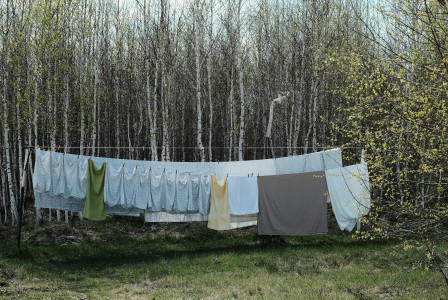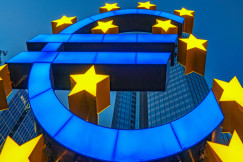Library and support resources
05 August 2025
Tracking Europe’s progress on textiles and the environment
Library and support resources
05 August 2025
Ecosystem's readiness to support EU strategic autonomy and defence efforts
Social dimension
Sustainable competitiveness
+14 more
Login / create an account to be able to react
-
66

The European Environment Agency (EEA) report examines how textile production and consumption in Europe are contributing to significant environmental pressures. It calls for urgent changes in production, design, and consumption patterns to reduce greenhouse gas emissions, water use, and waste generation across the value chain.
Topics
Albania
Armenia
Austria
Belgium
Bosnia and Herzegovina
Bulgaria
Croatia
Cyprus
Czechia
Denmark
Estonia
EU-27
Finland
France
Georgia
Germany
Greece
Hungary
Iceland
Ireland
Italy
Kosovo
Latvia
Liechtenstein
Lithuania
Luxembourg
Malta
Moldova
Montenegro
Netherlands
North Macedonia
Norway
Poland
Portugal
Romania
Serbia
Slovakia
Slovenia
Spain
Sweden
Switzerland
Türkiye
Ukraine
Other
Academic / Research and VET Institutions
Company with 250 or more employees
Cluster Organisations
Consumer Organisations
Cultural and Heritage Organisations
Destination Management & Marketing Organisations
EU Institutions
Industry Associations and Chambers of Commerce
International Organisations
Local Authorities
National authorities
Networks and Federations / Confederations
NGOs / Non-profits
Notified Bodies
Regional Authorities
SMEs (a company with less than 250 employees)
Social Economy Entity
-
Transition Pathway's building blocks
-
-
Ecosystem's readiness to support EU strategic autonomy and defence efforts
-
Social dimension
-
Sustainable competitiveness
-
Regulation and public governance
-
-
Industrial ecosystems
-
-
Proximity and social economy
-
Textile
-
-
Textiles ecosystem areas
-
-
Fibres, yarns and fabrics
-
Apparel and clothing accessories
-
Household/interior textiles
-
Technical textiles
-
Leather and fur
-
Footwear
-
Research and Innovation
-
Technology and Machinery
-
Waste management, reuse and repair
-
Business support and Communication
-
Not area specific (interested in more than one of the above)
-
Share
The 2025 update of the Textiles and the Environment briefing by the European Topic Centre on Circular Economy and Resource Use (ETC/CE) provides an evidence-based assessment of how textiles continue to impact the environment across their life cycle from production and consumption to end-of-life treatment. The report outlines data trends across Europe and flags key environmental issues, particularly relating to material intensity, consumption levels, waste generation, and limited recycling.
Key takeaways
- Rising consumption and material demand: The volume of textiles consumed in the EU continues to rise. In 2021, Europeans consumed around 6.5 million tonnes of textile products, with synthetic fibres (especially polyester) making up 55% of fibre use, followed by cotton (21%).
- Significant environmental footprint: Textile consumption in Europe resulted in 121 million tonnes of CO₂ equivalent emissions, 4 million tonnes of waste, and 620,000 tonnes of freshwater eutrophication potential in 2021, indicating substantial climate, water, and waste related impacts.
- Limited progress on circularity: While the number of textiles collected separately for reuse and recycling has increased slightly (2.8 kg per person in 2021 vs 2.2 kg in 2012), true fibre-to-fibre recycling remains minimal. Only 18% of post-consumer textile waste was collected separately, and 73% of it was destined for reuse or recycling primarily outside the EU.
- End-of-life management still a challenge: In 2021, around 3.2 million tonnes of textiles were landfilled or incinerated in Europe. Although EU Member States are expected to establish separate collection for used textiles by 2025, implementation remains uneven.
This 2025 update provides an essential evidence base to monitor the environmental performance of the EU textiles sector. It aligns with policy efforts such as the EU Strategy for Sustainable and Circular Textiles and informs the transition towards reducing virgin fibre use, increasing reuse and recycling, and improving transparency in material flows.
Read the full report here.
Comments (0)
See also
Small mid‑caps: bridging the gap between SMEs and large companies
- Categories
- Infrastructure Investments and funding R&I, techniques and technological solutions +28 more
Transition Pathway for a resilient, sustainable, and digital textiles ecosystem
- Categories
- Infrastructure Investments and funding R&I, techniques and technological solutions +28 more
The EU’s vision for sustainable fashion: transforming the textiles sector by 2030
- Categories
- Infrastructure Investments and funding R&I, techniques and technological solutions +28 more




